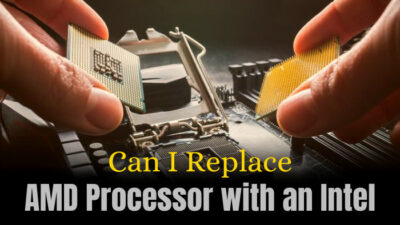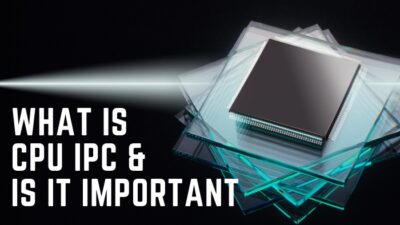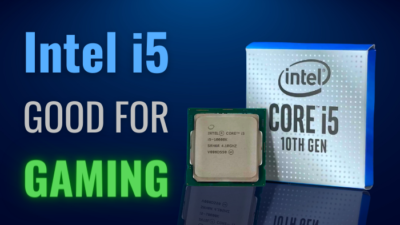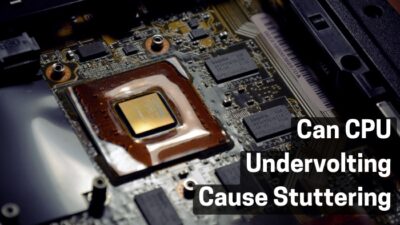The CPU is the processing core of a computer, It can act in tasks similar to the human brain. This part of the motherboard can calculate, make comparisons, and process the data several billion times per second. A very minor issue with the transistors in the CPU can affect your whole system.
Processors can be choked with dust if not cleaned after a certain period of time. Dust is small particles that have the access to microparticles. But, it could be very troublesome sometimes to remove dust from your CPU and keep everything clean.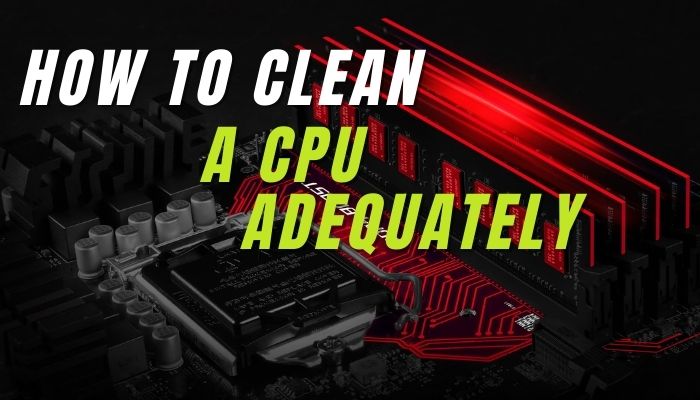
To keep everything safe, there are very few tactics to know about, and you also need some equipment and know their descriptions for this particular task.
What Tools You Will Need to Clean Your Processor?
If you haven’t cleaned your Processor for a certain time, you must know a few things. It can be damaged by the uncertainty of heat maintenance or dust. You can also experience denying commands but the system working.
To clean your processors, you need some instruction equipment and use them in different ways. You can keep toothpicks, smooth cloths, brushes, and paper towels to wipe out dust from various and surrounding parts of the CPU.
You can simply clean off the dust by blowing them with air. This can be done by the cans of compressed air pressers and a smooth brush. Let us dive into the work of each tool used in cleaning the processor and other essential parts of your PC.
Here is the list of equipment that you will need to clean your processor:
Anti-static Wrist Band
Our skin is active with static charge. Our body can pass static charges to the components and the CPUs transistors can be damaged due to static power. This can be done when we directly touch the particles. 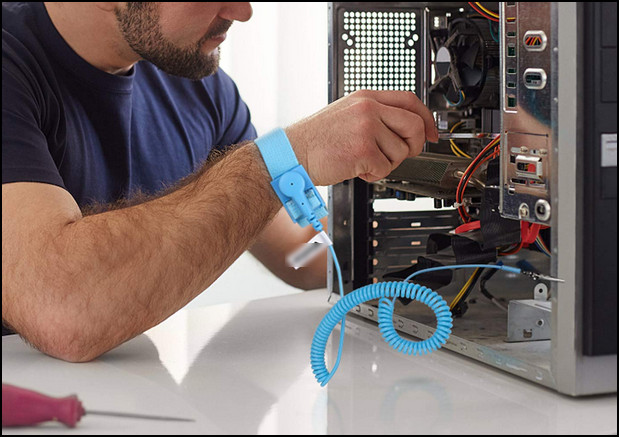 The ESD (anti-static) mat used for making anti-static wristbands are made of carbon or carbon-filled rubber. The strap is an aluminum bounded structure that can attach to the steel surface of the motherboard case and distribute the charge coming from your clothes, and hands. Attaching the band with your hand will pass the static charge somewhere else.
The ESD (anti-static) mat used for making anti-static wristbands are made of carbon or carbon-filled rubber. The strap is an aluminum bounded structure that can attach to the steel surface of the motherboard case and distribute the charge coming from your clothes, and hands. Attaching the band with your hand will pass the static charge somewhere else.
A Can of Compressed Air
While cleaning the particles of the motherboard, you will notice dust choked into places and that can only be removed by blowing them. You can use a can of compressed air pressure In those sensitive, narrow places.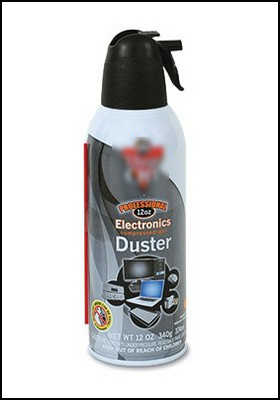 This ‘Can’ holds a plastic pipe on the top. This pipe transfers the air in a thin line, and you can aim the airflow in exact places. Before touching any chip or components you can use this air pressure to remove the dust primarily.
This ‘Can’ holds a plastic pipe on the top. This pipe transfers the air in a thin line, and you can aim the airflow in exact places. Before touching any chip or components you can use this air pressure to remove the dust primarily.
Thermal Paste
Thermal grease or thermal paste is made of silicon-based polymer. Thermal paste is generally used on the clean surface of the CPU chip to attach the cooling system more than closer. So that the fan can keep the Processor as clean as possible.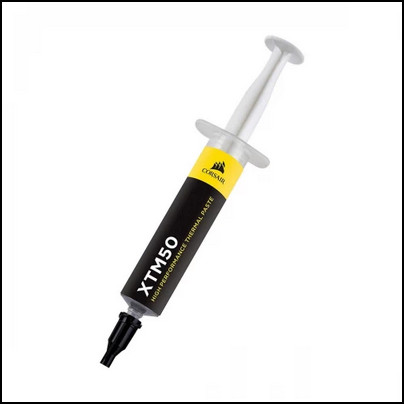 Thermal paste has low viscosity and high thermal conductivity of sodium-silicate, which makes it superior to its silicone-based counterpart. Thermal grease has LVM-700, a chemical combo of gallium-indium-tin alloy, making the material reach 2000oC.
Thermal paste has low viscosity and high thermal conductivity of sodium-silicate, which makes it superior to its silicone-based counterpart. Thermal grease has LVM-700, a chemical combo of gallium-indium-tin alloy, making the material reach 2000oC.
This is why in connection with the cool air, thermal paste gets cooler.
Cotton Swab
Cotton swabs are used after removing the dust completely. The places hard to reach in your motherboard can be accessed with a cotton swab wetted with cleaning alcohol or water. After removing the fan, you will notice thermal paste on your Processor, you can moisten a cotton swab before applying it to remove the thermal paste.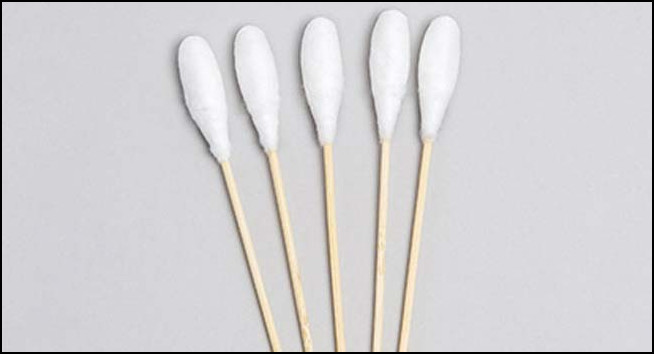 You have to be gentle and slow with the cotton swab because your processor is very sensitive, you can move and bend pins or displace the chip with a sudden rough movement.
You have to be gentle and slow with the cotton swab because your processor is very sensitive, you can move and bend pins or displace the chip with a sudden rough movement.
Isopropyl Alcohol and Rubbing Alcohol
The main difference between Isopropyl and rubbing alcohol is the applied concentration. Isopropyl alcohol has 100% alcohol that can vape out in seconds, but rubbing alcohol has a lesser percentage of alcohol. You can use any alcohol that reaches over 92% alcohol concentration.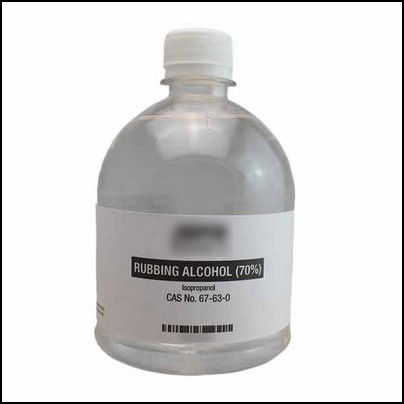 Isopropyl alcohol is very thin that dispatches the dirt out of the surface of the component. You can only use Isopropyl alcohol by applying it on a soft piece of cloth, using a paper towel can leave small paper particles on your CPU.
Isopropyl alcohol is very thin that dispatches the dirt out of the surface of the component. You can only use Isopropyl alcohol by applying it on a soft piece of cloth, using a paper towel can leave small paper particles on your CPU.
You can use a cloth after applying a paper towel, it will help you get rid of those paper particles.
You can also use Methylated spirits to wipe the thermal paste off the processor. But you have to be very careful when using it.
Paper Towels and Soft Cloths
Soft clothes and paper towels are the perfect materials to wipe out the dust particles stuck on the surface or corner of the CPU and other components. Isopropyl alcohol is applied preferably on these cleaning cloths and papers and then smoothly rubbed over the areas choked with dust. 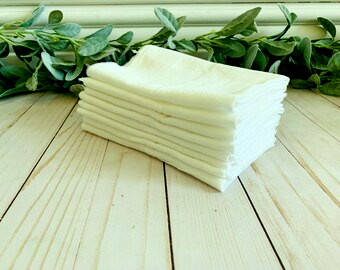 While cleaning with paper towels, be cautious of the ripped-out paper particles stuck on the processor. With increasing heat, those can burn and damage the processor.
While cleaning with paper towels, be cautious of the ripped-out paper particles stuck on the processor. With increasing heat, those can burn and damage the processor.
Clean the leftover paper particles and later use a soft cloth dipped in Isopropyl alcohol to remove the paper particles that are not visible.
Soft-bristled Brush
You can also use a soft brush to clean dirt. While using any brush on your motherboard, make sure the strips of the brush are not hard.
If the brush is not soft, wiping it over the components can and will harm the connections and also can displace small parts of the motherboard that are hard to locate later.
Anti-static Brush
Anti-static brushes are made of two kinds of fiber:
- Natural fibers: Tampico, horsehair, goat hair, and hog bristle.
- Synthetic fibers: Thunder TM, carbon fiber, Statigo9, and static dissipative nylon.
Anti-static brush prevents the dust particles from coming back. Always use an anti-static brush before using the drier.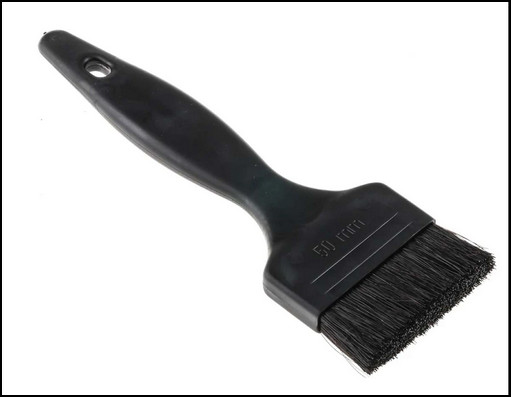 You should be very calm with the brush because heavy use can damage or displace your pins. You can also slightly use the anti-static brush on the sensitive areas,
You should be very calm with the brush because heavy use can damage or displace your pins. You can also slightly use the anti-static brush on the sensitive areas,
Hairdryer
Using a Hairdryer, you can dry the CPU after wiping it with alcohol. Generally, alcohol dries out fast depending on its concentration. If the concentration is lower than 90% there could be water that remains after the cleaning.
You must not use the heat blow, but normal temperature airflow. Holding the dryer for a few minutes can help the moisture to dry out.
These are the equipment that you can use to clean your processor. Depending on the particular component, the order of use can vary.
Disengage and Clean your CPU Fans
You should always ensure all the electrical connections are plugged out before touching any component or body parts of the CPU tower.
To clean your CPU properly, you must clean the fan that is placed above the processor. Fans cocked with dust can interrupt the airflow, which can not provide enough cooling to the CPU. this can result in high temperatures.
While the fan is not working because of any issue like stocked dust, the CPU heats up, and it reaches 100 percent usage immediately to indicate the problem. You can check it from the performance section in the task manager.
You can either clean the fan by removing it from the case, or you can just use an air blower to blow off the dust and later brush it with an antistatic brush.
Here is how to clean your processor’s Cooling Fan by removing it:
- Turn off your computer and unplug all the power connections.
- Separate your CPU tower and unscrew the nuts on the cover.
- Remember the position of each nut, and make a note if necessary.
- Find the arrows on the fan and twist them, make sure to not put your fingers on the fans or they can break.
- Hold the body of the fan and smoothly pull the arrows off.
- Unplugged the connector.
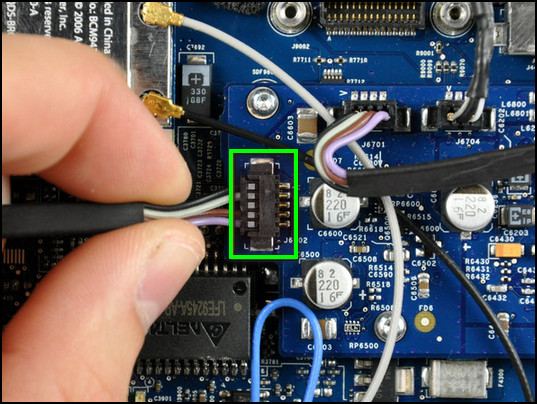
- Use a Can of compressed air pressure to blow the dust off.
- Take a soft brush to clean the wings. You can also use a cotton swab to clean the fan.
Your FAN is cleaned, and now you will notice the thermal paste that was applied previously.
How to Clean Thermal Paste Off CPU
To remove the thermal paste from the surface of your processor, you will need Isopropyl alcohol, a toothpick or cotton swab, and a piece of magic cloth.
Follow these steps and clean the thermal paste of your CPU:
- Take a toothpick and remove as much thermal paste from the surface as possible.
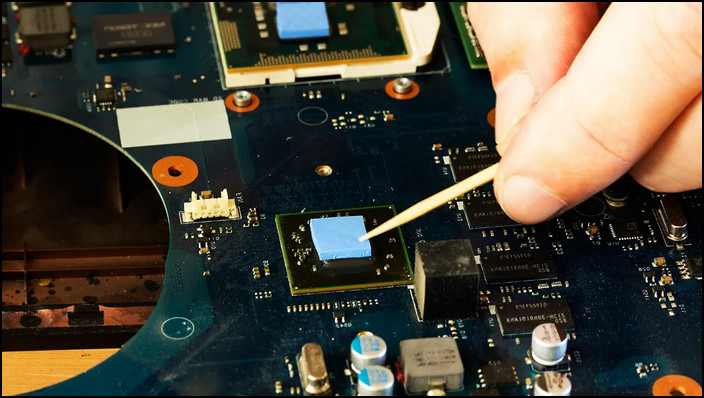
- Remove slowly and gently. Each time, after picking up the paste, clean it with tissue paper.
- Now dip a Cotton swab into Isopropyl alcohol and tenderly wipe the surface.
- Dip a smooth or magic cloth in the alcohol and wipe the top and surroundings.
- Turn on the dryer and blow the moisture away.
If the thermal paste got under the processor, you can also clean it.
Here is how to clean the thermal paste from beneath your CPU:
- Understand the clipping system of your motherboard and unplug the processor.
- Take a smooth brush.
- Dip it in the Isopropyl alcohol.
- Lightly wipe between the pins. The pins can bend, so ensure very little pressure.
- Once the toothbrush starts to get dirty, clean the brush with a paper towel.
- Dry your processor with a dryer after cleaning.
- Do the same with the socket.
If the processor has a socket type of LGA, you can easily use a smooth cloth dipped with 99% or 100% cleaning alcohol and wipe the paste off the downside.
For more details, check out our complete thermal paste removal guide.
Now, as you have cleaned and dried out the processor and its socket, you can plug the processor and reverse the setting to fit everything.
FAQs
How often you can clean your processor?
It is not important to clean your CPU frequently. Repeatedly touching and cleaning the CPU may damage it. You can clean your processor once every year.
How often should I clean my cooling fans?
If you clean your cooling fan once every two months it is better.
Does cleaning the CPU improve performance?
Every component degrades after a period. Keeping everything clean frequently may provide little growth but it always helps in the long run.
Is it OK to leave thermal paste?
You can leave the thermal paste for more than a year, depending on the amount of dust captured by it.
Wrap up
For cleaning a processor you need equipment such as toothpicks, paper towels, magic cloth, and others. You may need to make an alternative approach to the order of using that equipment.
The processor is a sensitive part of the computer, if you are calm in mind and precious about every step that you take, you can easily clean or replace the CPU. Not only that but you can also clean other components of your computer through proper guidelines.
If you have faced any trouble or have any comments, please put them in the comment box.

